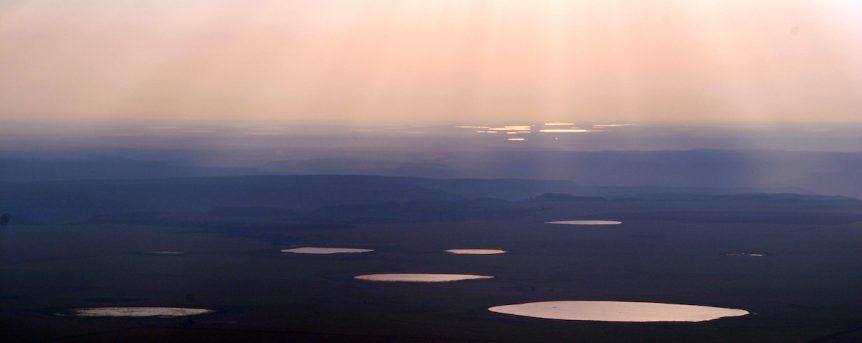Read the Transcript
Our topic is conservation practices that help the bottom line and improve habitat for wildlife. We can cite the example of Larry Haynes’ northeast Colorado operation. Larry farms at Holyoke. Larry farms some pretty good land, but he has several playas in fields under ag production. That makes farming those fields challenging when those wetlands are wet. Pheasants Forever and Quail Forever Farm Bill Biologist Jerry Miller helped get going a couple projects on Haynes’ land.
“The second field has three playas. Whenever he wanted to farm the field, they were either too wet or the crop that was there would drown out. So what we did was incorporate all three playas into one block and took out that corner of the field.”
That’s right. Larry Haynes got fed up trying to farm around, or through, those playa lakes. Larry Haynes made a management decision to “cry Uncle!” and just stop farming areas prone to mudholes.
“Most of the time, in my experience — and I’ve been out here for over 40 years — you get a crop in there and it rains, you cannot get the crop harvested. So eventually, you really harvest very seldom, maybe one out of every five or ten years. From an economics standpoint, it’s a no-brainer. You have the expense of preparing your land to put the crop in the ground — your seeds, your fertilizer, your planting and all the costs. But you don’t get anything back.”
This was a cost-share project with Natural Resources Conservation Service. Haynes began managing the land for wildlife habitat.
“They put it in a 10- or 15-year program that is funded through the government. It’s a program that probably benefits everybody — including the taxpayer, the farmer and the sports people who hunt the wildlife.”
Haynes says, even though parts of his fields have been taken out of production, other gains presented themselves.
“This is why the land isn’t lost. It’s just put to another use, and I think the use we’re putting it to is, first, you’re going to recharge the Ogallala Aquifer water.”
Not only has recent science confirmed that playa wetlands recharge the aquifer, it looks like playas are the primary source of aquifer recharge. Because of that, biologist Jerry Miller designed grass buffers around the playas.
“Anything we can do to keep any herbicides out of those basins is a good thing. Those buffers really do a lot to filter anything that comes off that field.”
Those wetlands taken out of production? Miller designed plant life to attract bugs, and birds.
“We’re in pheasant country, and I try to put in some of the taller, warm season grasses and some flowering forbs into that mix so that we’re developing some really good brood habitat.”
But Haynes says there are more benefits to taking wetlands out of ag production and turning them over to wildlife.
“A lot of people come out from the cities and suburbs the first day of pheasant season, and they like to come out and make a weekend or a two- or three-day hunting trip out of it. If you’ve got good pheasants or turkeys or wildlife, you’re going to attract the hunters. They hunt; they patronize the restaurants and other businesses in town. I think it’s a positive thing for lots of people. You’ll get the hunters out here if the game is out here, and they know it’s out here.
Playa Country, which ended in late 2016, was a weekly show that featured conservation and wildlife experts — as well as farmers, ranchers and land managers — talking about conservation practices that improve wildlife habitat and landowners’ bottom-line.

